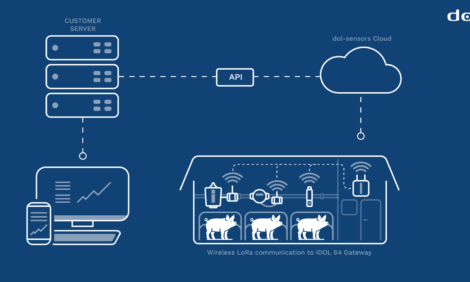



Survival of Manure Pathogens in Swine Manure
Ann Huber, environmental microbiologist with the Soil Resource Group in Guelph reported her study into numbers of E. coli, Salmonella and Campylobacter in pig manure during storage at the 28th Centralia Swine Research Update. Her data enables predictions of storage conditions and times required to achieve significant pathogen reductions prior to field application.
This swine manure study is part of a larger research programme to examine the effect of manure storage conditions on the survival of indicator and pathogenic microorganisms in major livestock manure types under Ontario conditions, to establish typical indicator and pathogen loads to fields at land application time, and to identify possible low-tech options for reducing pathogen loading rates by storage management. In particular, the decline in pathogen levels in liquid swine manure over time was compared for static, i.e. no fresh manure addition, versus dynamic manure storage, i.e. periodic fresh manure addition, during summer and winter storage.
The following report summarises the results for liquid swine manure.
Methods
Four sets of liquid swine manure trials were established in on-farm storages in February 2007, August 2007, January 2008 and July 2008.
Above-ground, open concrete tanks were used for 'dynamic' and 'static' storage for all trials except 'dynamic', winter 2008, which was an in-ground covered storage.
Declines rates of indicator (E. coli) and pathogen (Salmonella and Campylobacter) in bulk manure and in 'captive' populations in manure held in vials within on-farm manure storages were measured. Salmonella was also spiked into vials to ensure a consistent presence at high enough numbers to enable monitoring over the course of all trials.
Results
Storage of liquid swine manure without fresh manure addition consistently resulted in pathogen reduction compared to the standard practice of periodic additions of fresh manure to storages. This held true for both native and spiked populations of E. coli, Salmonella and Campylobacter, in both winter and summer storage (Figure 1). Table 1 summarises the microbial populations at land application time for the four storage trials.


Decline rates of E. coli and Salmonella were much slower during winter compared to summer storage. For swine manure, storage times for 90 per cent pathogen reduction (decimal reduction time, DRT) during summer are in the order of two to three weeks (Table 2). To achieve the same reduction under winter storage conditions (frozen surface) well over eight weeks would be required. Populations remained relatively stable over the frozen period; spring thaw and increased manure temperatures improved reduction rates. The seasonal effect was less consistent for Campylobacter reduction, which has been noted to be more cold-sensitive than the other organisms tested.

Conclusions and Recommendations
Static storage of liquid manures results in substantial pathogen die-off compared to dynamic storage.
The time required to reach a 90 to 99 per cent reduction is much greater in the winter than in summer.
Data from the broader study indicates that pathogen decline rates are directly related to temperatures during storage.
The data enables predictions of storage conditions and times required to achieve significant pathogen reductions prior to field application.
Further Reading
| - | You can view other papers presented at the Centralia Swine Research Update 2009 by clicking here. |
June 2009






